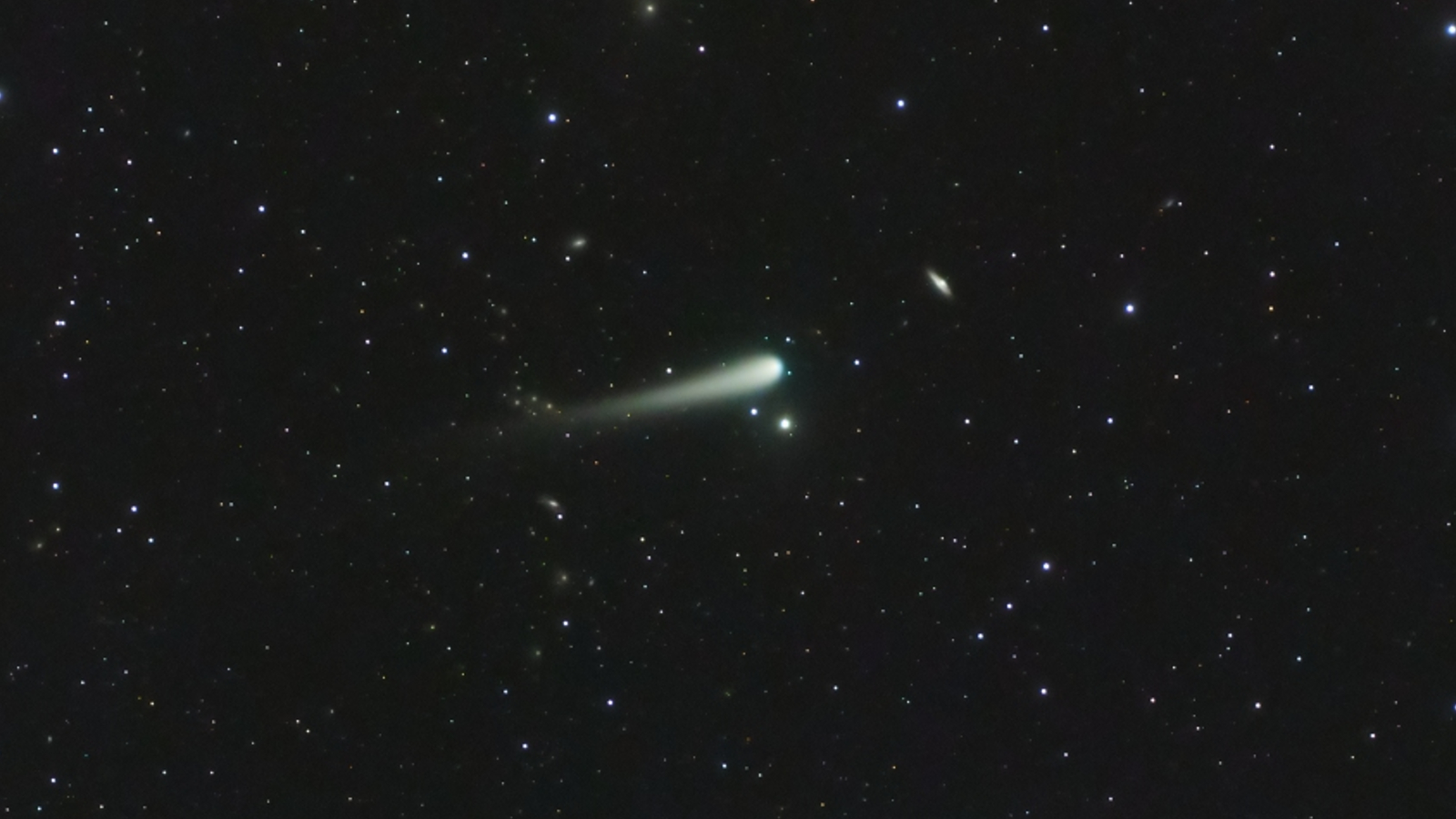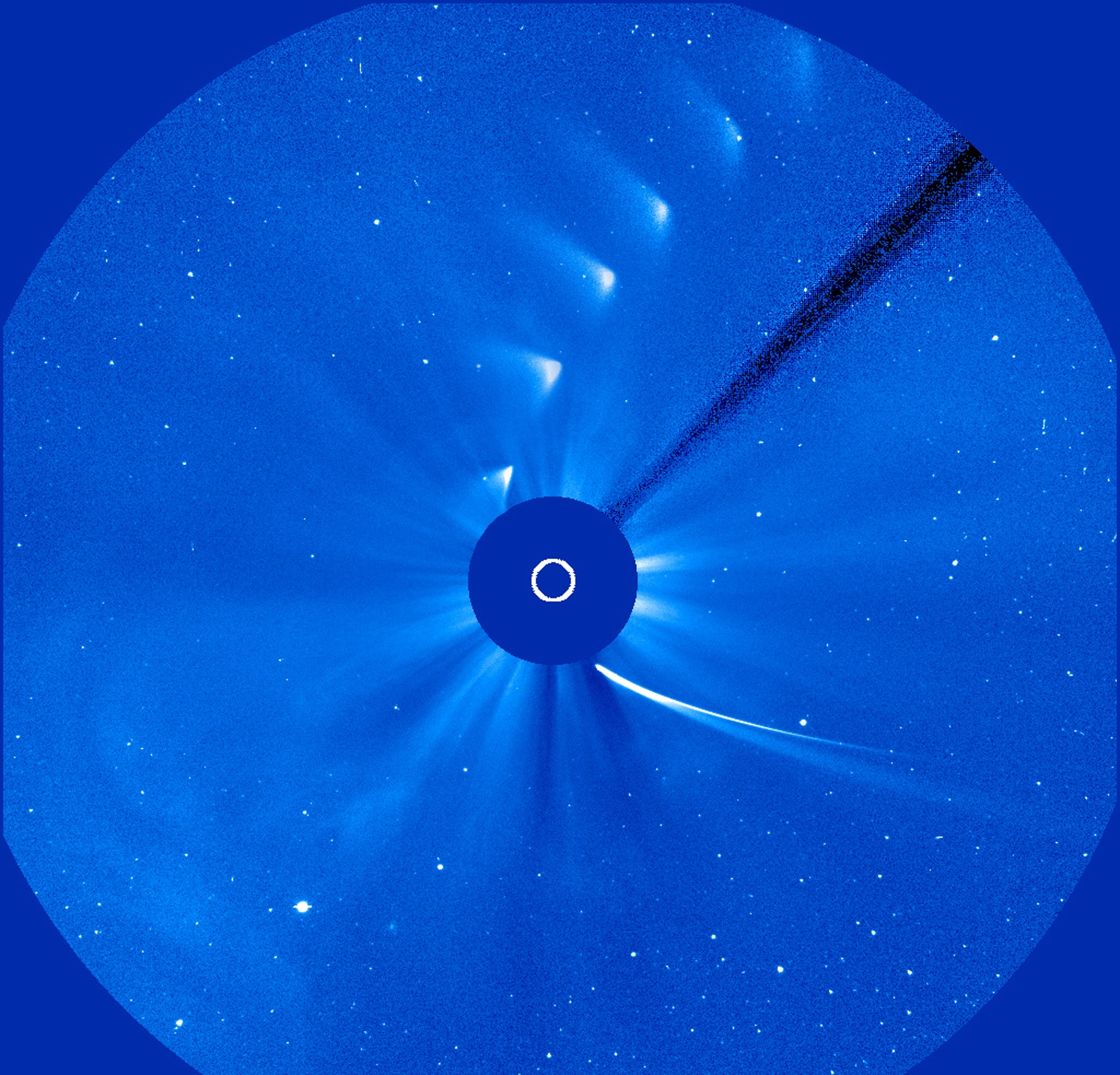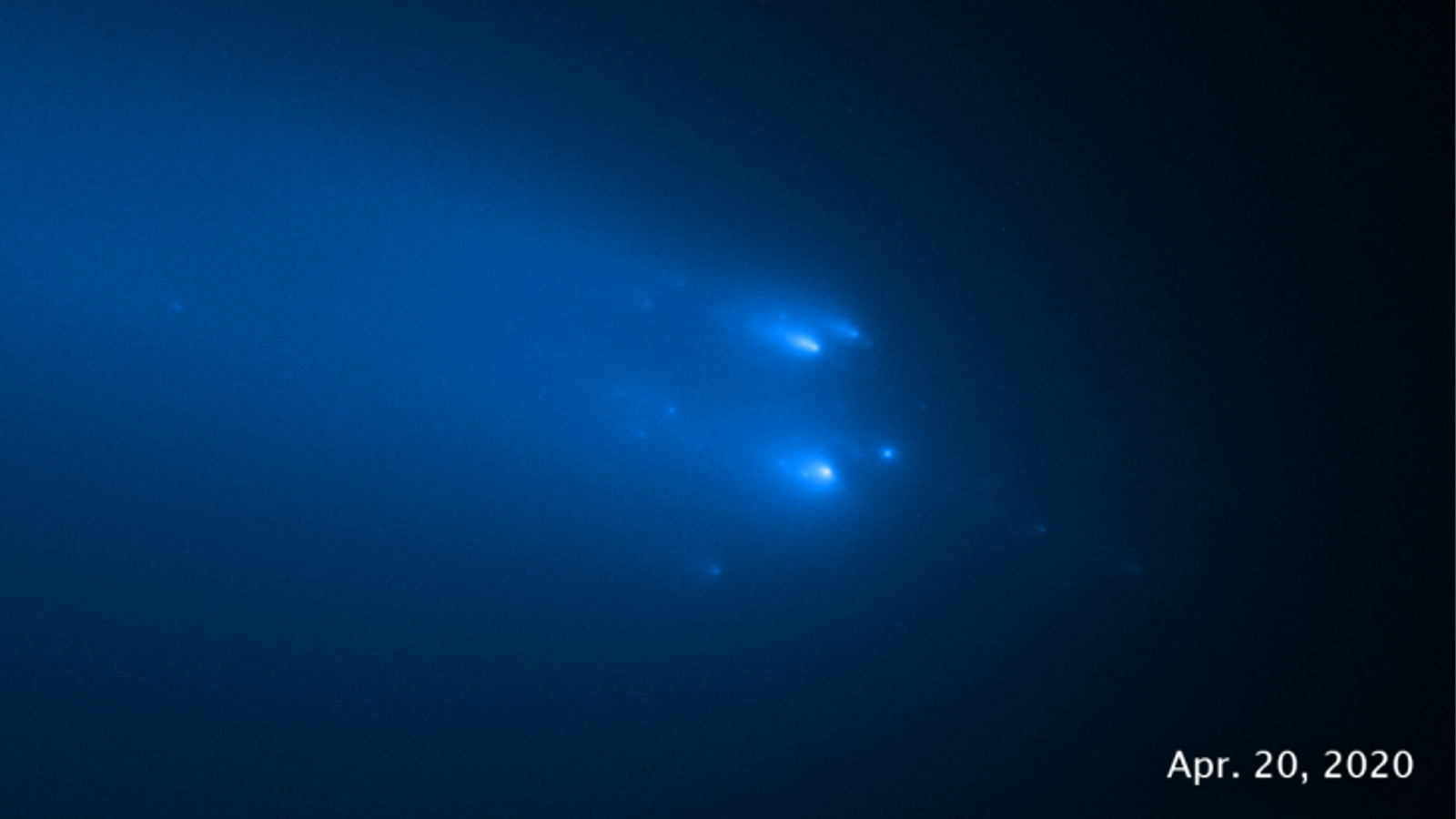
An incoming comet that could be visible to the naked eye as it passes Earth later this year may be doomed to disintegrate before we get the chance to see it up close, a new study suggests. Recent observations hint that the comet has already begun fragmenting and could fall apart completely in the next few weeks or months. However, some experts disagree.
Astronomers at the Purple Mountain Observatory in China first spotted comet C/2023 A3, also known as Tsuchinshan-ATLAS, on Jan. 9 2023 and it was confirmed on Feb. 22 the same year, when NASA's Asteroid Terrestrial-impact Last Alert System (ATLAS) spotted it barreling toward the sun. The comet's trajectory hints that this could be its first-ever close approach to the sun and that it may eventually be ejected from the solar system.
C/2023 A3 is due to reach its closest point to the sun, or perihelion, on Sept. 27 and could make its closest pass to Earth on Oct. 13, when it will be around 44 million miles (71 million kilometers) from our planet. If the comet wanders this close to Earth, it will be as bright as most stars in the night sky, making it possible for people to spot it with the naked eye for several weeks.
But in a new study, uploaded July 8 to the preprint server arXiv, study author Zdenek Sekanina — an astronomer at NASA's Jet Propulsion Laboratory who has been studying comets for more than 50 years — argues that C/2023 A3 may meet its end before it reaches perihelion.
"The comet has entered an advanced phase of fragmentation, in which increasing numbers of dry, fractured refractory solids stay assembled in dark, porous blobs of exotic shape," Sekanina wrote in the paper. These fragments will eventually become "undetectable as they gradually disperse in space," he added.

Large comets normally fragment at perihelion, as the sun's immense gravity tugs on the icy objects. This is what happened to comet ISON, which was violently ripped apart during a solar flyby in 2014, according to the European Space Agency.
Scientists previously hypothesized this would also happen to two other comets that recently passed by Earth: Comet Nishimura, which slingshotted around the sun in September last year; and Comet 12P/Pons Brooks, also known as the "devil comet," which survived its trip around the sun in April this year.
However, comets like C/2023 A3 can also fragment on approach to the sun as the increase in solar radiation puts pressure on previous fractures. This happened to comet C/2019 Y4, which spectacularly fell apart into dozens of pieces before its close approach in 2020, according to NASA.

In the new paper, Sekanina argues that several lines of evidence point to C/2023 A3's "inevitable collapse."
First, the comet has failed to brighten as it approaches the sun like most other comets do, meaning that its nucleus, or shell, may not be completely intact. Second, the comet's dusty tail is much thinner than it should be and has a "peculiar orientation," which also suggests the comet is not in one piece. Third, the comet seems to be experiencing "non-gravitational acceleration," which is most likely being caused by inner jets of gas that are pushing the nucleus apart.
However, not everyone agrees with Sekanina's observations.
"This doesn't look like a comet that is fragmenting to me," Nick James, an astronomer with the British Astronomical Association who was not involved in the study, told Spaceweather.com. "To use [the word] 'inevitable' in any prediction about a comet may be unwise," he added.
However, James noted that the new paper is "another good reason to observe this comet at every opportunity."







